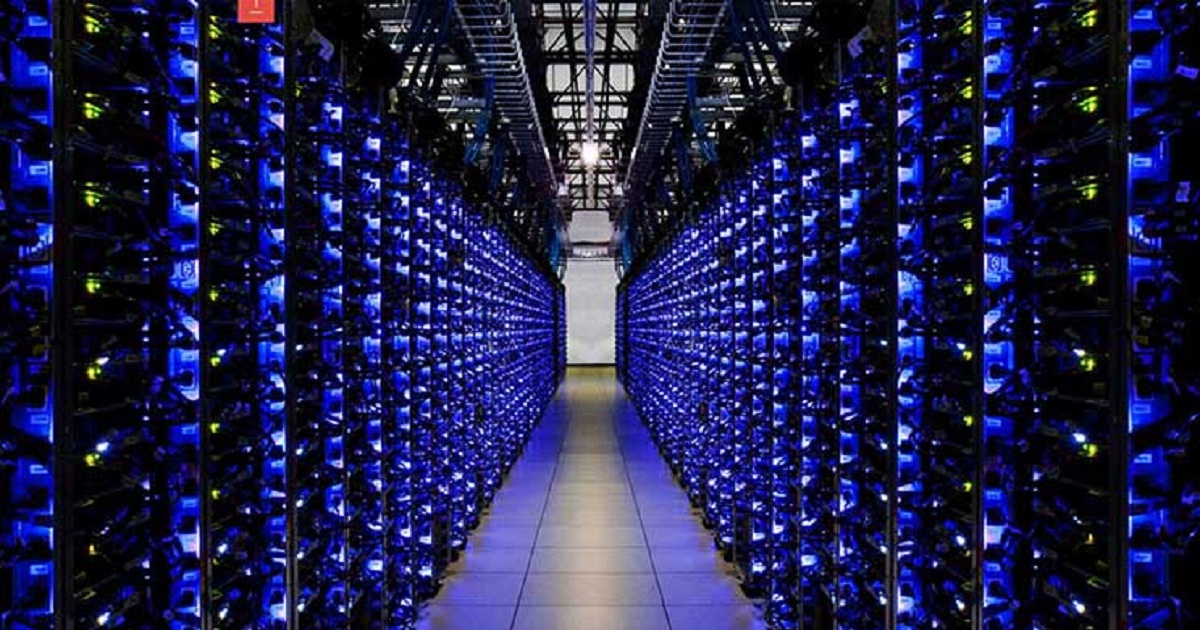
Hyper-Converged Infrastructure
Article | October 10, 2023
The year of the pandemic – that is how many of us will remember 2020 for generations to come. Challenging circumstances brought by the sudden and devastating spread of coronavirus (COVID-19) has made us witness the world making quick changes to remote working, businesses struggling to survive, the distress of social distancing rules, the emotional rollercoaster for people isolating, an overall crisis for health systems and the economy of countries, no matter where you were in the world.
When reflecting on what it has meant so far, however, we must realise that it’s not all doom and gloom. As Albert Einstein once said, “in the midst of every crisis lied a great opportunity”. The crisis has prompted companies to reinvent and accelerate digital plans, to adopt new technologies and sales models in order to adapt and survive – and for Managed Service Providers (MSPs) to step up to support businesses and employees in every way possible.
On the other hand, let’s also not forget what the changes have meant for the health of our ecosystems. With industries across varied sectors forced to work remotely and shut down operations, the changes have led to benefits for the environment – and we could argue that such break was something that our planet was desperately in need of.
Even now, as we start to see our way out of this situation, it’s hard to believe how it all happened. For most countries, it was a similar case: we were hearing news about a new virus spreading in China; and before we knew more about it, the virus arrived in our own territories. It seemed unlikely, and yet, a few days later, the virus was quickly spreading, and lockdown restrictions came into effect for almost every nation in the globe. Millions of workers around the world had to leave the office and make a quick switch to remote working, without much notice at all.
In the initial stages of lockdown, MSPs had to work around the clock to help customers that weren’t ready for flexible working, to enable people to work from home. As every other industry and business type, MSPs also encountered challenges. Not being able to help a client on-site can sometimes significantly affect the speed of project delivery. So, adjustments had to be made, wherever possible, to deliver services remotely, as quickly and seamlessly as possible.
“We are all in this together” is a phrase that became widespread in the UK. IT professionals, like many other sectors, had to support each other, and they have been working together as a community, to assist clients, businesses, and the wider public, since working from home was suddenly imposed for the vast majority. In the technology space, there is a lot of knowledge to share and to work with, which has led to many tech leaders and companies offering free advice, webinars and other tools to help with the struggles that have risen in the midst of the pandemic.
Shifting priorities based on customer needs
In the initial stages of the pandemic, MSPs played a critical role providing small and medium sized businesses with the tools and the IT infrastructure to keep their business running. Enabling office-based workers to continue their work from home was only the first step, however.
The sudden shift to remote working has required new tools and exposed new security vulnerabilities. All around the world, we saw an increasing number of cyber-attacks and threats taking place. Remote working means many people were using personal computers for work and business purposes, and so, products that are designed to keep personal computers protected became essential.
MSPs have also focused on increasing security measures for protecting password and identities for customers. Passwords on their own are not secure enough and can be easily compromised, so it has been a case of quickly deploying password management and Multi-factor Authentication (MFA), also known as two-factor authentication (2FA). MFA immediately increases security and ensures that clients’ accounts are significantly less likely to be compromised. In a few simple steps, IT providers can deploy MFA to help protect an organisation against breaches due to lost or stolen credentials.
Beyond helping employees to work from home securely, MSPs have assisted companies in implementing cloud-based applications, and managing access and restrictions to certain applications, especially for furloughed staff.
Embracing opportunities in the post-pandemic landscape
The spread of Covid-19 has made remote working the new norm, but how likely is this to become a permanent thing? Many employers and workers have started to believe that working from home will become more and more common for employees, even after the threat of the virus is gone. It’s difficult to know what the final picture will be, but it’s remains a fact that, as offices gradually re-open after lockdown, employers are increasingly looking at new ways of flexible working.
Many organisations that have been forced to work from home have been functioning remotely with little to no issue, so it stands to reason that the future of work will become more flexible. Video-calls, online training sessions, webinars, online meetings, it all sounds too familiar now, doesn’t it?
Remote working was already popular, though for a long time it wasn’t much more than a much-appreciated working benefit offered by employers, as part of the ‘job perks’ package. The pandemic only accelerated the need for remote working capabilities, and now telecommuting seems to be taking over as the new norm.
The IT landscape has mutated, and quite possibly it has changed for good. Technology leaders will have to continue to listen to the evolving needs and demands of the users and the markets in which they operate. For MSPs, it means the crisis is bringing opportunities to provide value to clients seeking support for enhanced mobility and flexible working. Now that work-from-home setups are in place, there’s room for improving remote access solutions and security measures.
Cloud migrations, which are expected to increase after the pandemic, present an opportunity for remote employees to improve collaboration and business resiliency. There will be a push towards more robust cloud-based solutions, and these migrations are likely to become one of the top opportunities for the months to come to drive revenue for MSPs, as well as VoIP solutions, business continuity and hardware sales.
The pandemic seems to have accelerated the demand for cloud services and security solutions. MSPs will play an important role in finding the best solutions for every business type, to enable them to work more flexibly and effectively. IT providers will be increasingly tasked with the job of securing devices and protecting employees as they work remotely, especially for SMBs.
Read More

Hyper-Converged Infrastructure, Windows Systems and Network
Article | July 11, 2023
Businesses are depending more and more on information technology to accomplish daily objectives. The viability and profitability of a firm are directly impacted by the necessity of putting the appropriate technological processes in place. The misunderstanding that "the Internet is down" is often associated with poor internet connectivity shows how crucial network maintenance is since troubleshooting should always begin and conclude with a network expert. In actuality, though, that employee will spend time out of their day to "repair the Internet," and the money spent on that time is the result of the company's failure to implement a dependable network monitoring system. The direct financial loss increases with network unreliability.
Because expanding wide area network (WAN) infrastructure and cloud networking have now become a significant component of today's enterprise computing, networks have grown much more virtualized and are no longer restricted to either physical location or hardware. While networks themselves are evolving, there is a growing need for IT network management. As organizations modernize their IT infrastructure, they should think about purchasing a network management system for several reasons.
Creating More Effective, Less Redundant Systems
Every network has to deal with data transfer through significant hubs and the flow of information. In order to avoid slowing down data transfer, not using up more IP addresses in a network scheme than necessary, and avoiding dead loops, networking engineers have had to carefully route networking equipment to end devices over the years. An effective IT management solution can analyze how your network is operating and provide immediate insights into the types of changes you need to make to cut down on redundancy and improve workflow. More productivity and less time spent troubleshooting delayed data transfers result from increased efficiency.
Increasing Firewall Defense
Given that more apps are being utilized for internal and external massive data transfers, every network must have adequate firewalls and access control setup. In addition to screen sharing and remote desktop services, more companies require team meeting software with live video conferencing choices. Programs with these features can be highly vulnerable to hackers and other vulnerabilities; thus, it's crucial that firewalls stop attackers from utilizing the software to access restricted sections of corporate networks. Your network management tools can set up your firewalls and guarantee that only secure network connections and programs are used in critical parts of your system.
The bottom line is that your company network will constantly require security and development, and your underlying network must be quick and dependable to satisfy demands for both workplace productivity and customer experience. Which IT network management system, nevertheless, is best for your company? Effectiveness doesn't require a lot of complexity, and if it works with well-known network providers, there's a good chance the cost will be justified. Rock-solid security will be the most crucial factor, but you should also search for a system that can operate on physical, cloud, and hybrid infrastructure.
Read More

Hyper-Converged Infrastructure
Article | October 3, 2023
One of the most exciting areas of Vubiq Network’s innovative millimeter wave technology is in the application of ultra high-speed, short-range communications as applied to solving the scaling constraints and costs for internal data center connectivity and switching. Today’s limits of cabled and centralized switching architectures are eliminated by leveraging the wide bandwidths of the millimeter wave spectrum for the high-density communications requirements inside the modern data center. Our patented technology has the ability to provide more than one terabit per second of wireless uplink capacity from a single server rack through an innovative approach to create a millimeter wave massive mesh network. The elimination of all inter-rack cabling – as well as the elimination of all aggregation and core switches – is combined with higher throughput, lower latency, lower power, higher reliability, and lower cost by using millimeter wave wireless connectivity.
Read More

Article | April 15, 2020
COVID-19 has altered our world. In this series of stories, Data Center Frontier explores the strategic challenges the pandemic presents for the data center and cloud computing sectors as we navigate this complex new landscape. We begin with a look at how COVID-19 is impacting demand for digital infrastructure. The COVID-19 Coronavirus pandemic has reinforced the importance of data centers and cloud computing for our society. In the early days of the crisis, the data center
Read More